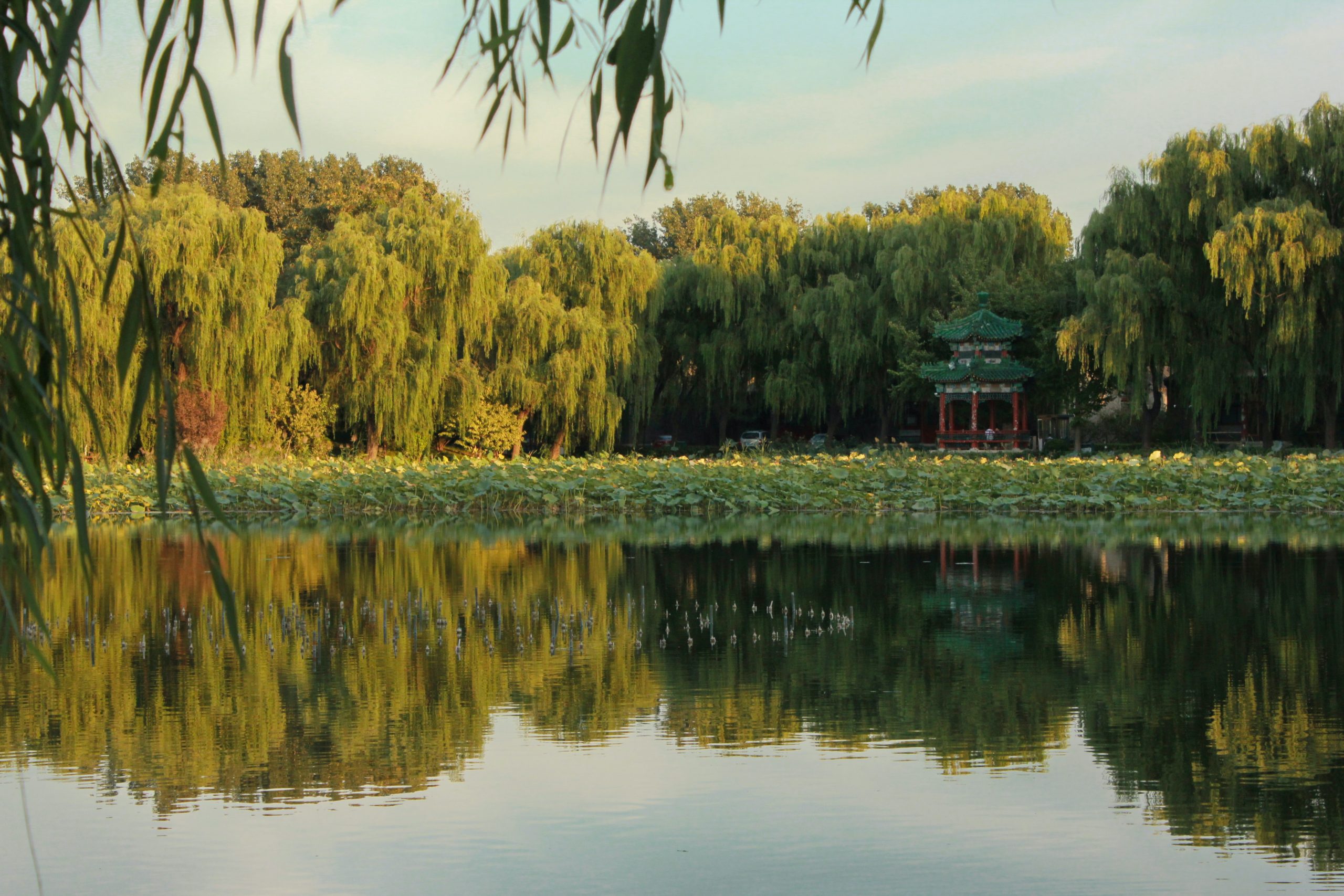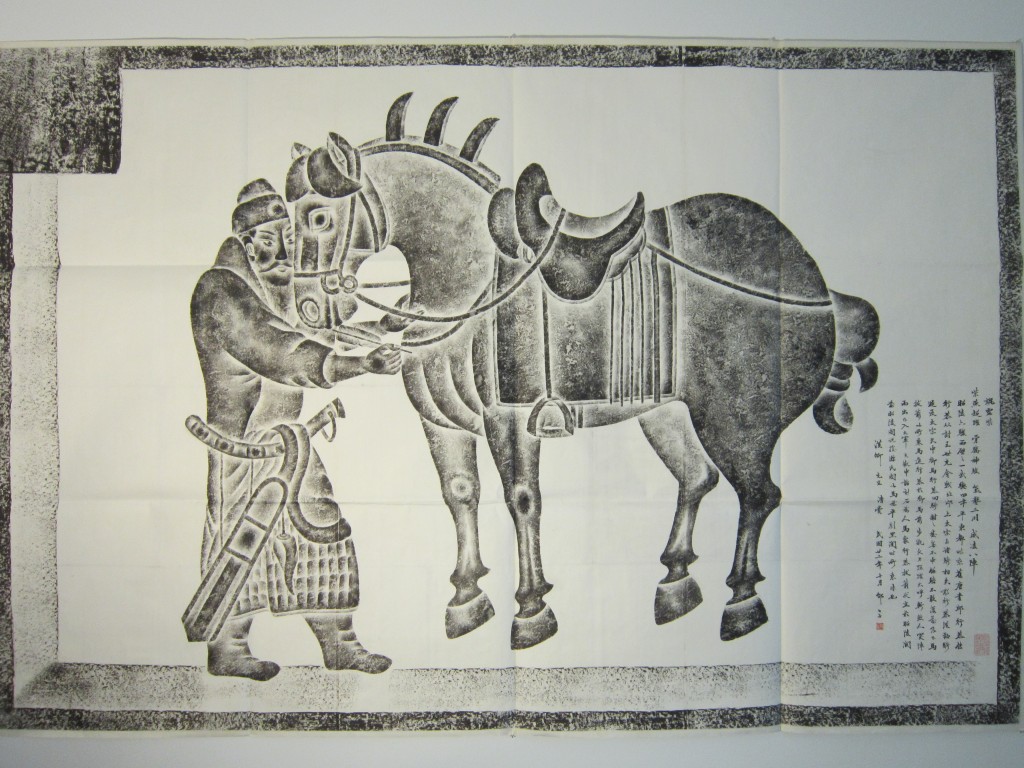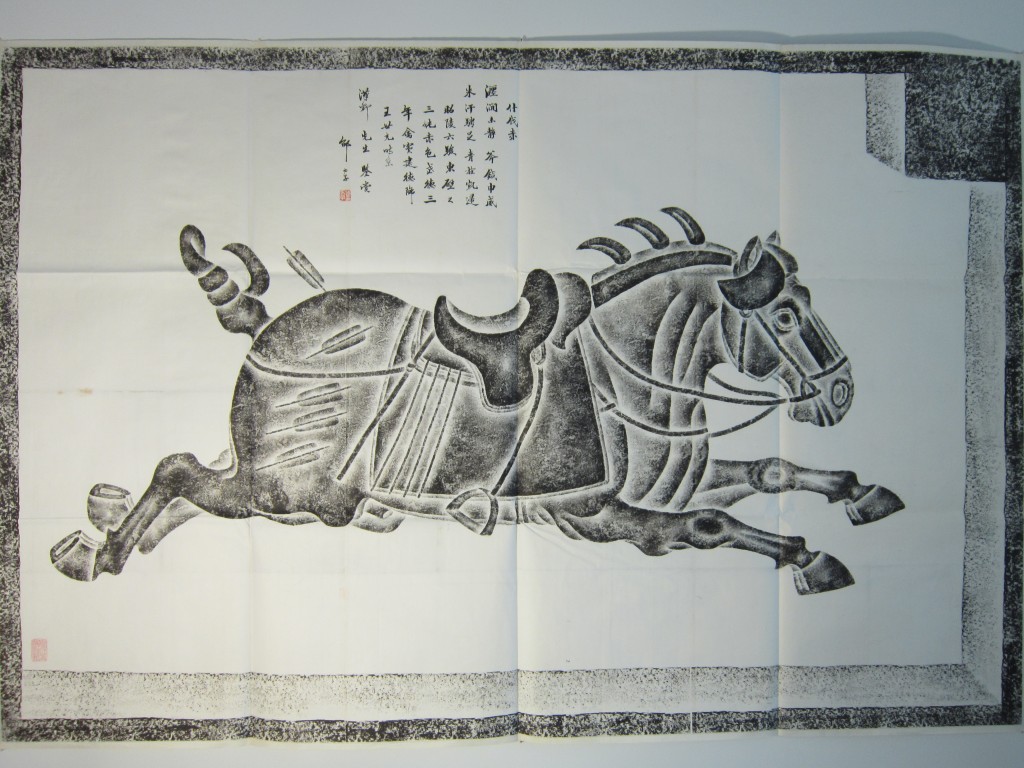Rubbings of Taizong Horses

The East Asian Library has a complete set of six rubbings/paintings of Taizong horses in the special collection room. They were made on paper and mounted on white linen fabric, and each measure 138.5 centimeters high and 204.5 centimeters wide (54.5 inches x 81.5 inches).


The six horses were Emperor Tang Taizong’s favorite battle chargers and were closely connected with his major military campaigns. Taizong ordered images of his six favorite horses to be carved in stone. Their names are: Saluzi (颯露紫), Quanmaogua (拳毛騧), Baitiwu (白蹄烏), Telebiao (特勒驃), Qingzhui (青騅), and Shifachi (什伐赤). Taizong also composed six laudatory poems in honor of the horses. The six stone horse reliefs were originally placed outside the Mausoleum of Emperor Tang Taizong, known in Chinese as “Zhaoling Liujun 昭陵六駿.”
These six rubbings/paintings are replicas of the six stone horse reliefs. They were made by Li Yuexi 李月溪 (1881-1946) in the early 20th century. Five of the items carry a seal “Chang’an shiyin Li Yuexi shouta jinshizhang 長安市隱李月溪手搨金石章.”
These rubbings are truly unique because they were inscribed by Mr. Shao Lizi 邵力子 and presented to General Zhang Xueliang 張學良(漢卿), dated October 1934. Shao Lizi (1882-1967) was an educator, calligrapher, and politician in the Republic of China. In 1934, he was the Governor of Shaanxi Province. In 1949, he represented the Nationalist government in peace talks with the Chinese Communist Party in Beiping. After the breakdown of the talks, he left the Nationalists to remain in Beiping. Zhang Xueliang (1901-2001), a onetime warlord who, together with General Yang Hucheng, in the Xi’an Incident (1936), compelled the Nationalist leader Chiang Kai-shek to form a wartime alliance with the Chinese communists against Japan. He then spent the next 55 years under house arrest in China and Taiwan, gradually and reluctantly becoming a national hero. He died in Honolulu in 2001. In 1934, Zhang Xueliang was the Command of the Communist Suppression Campaigns in Hebei-Henan-Anhui, and he accompanied Chiang Kai-shek on a trip to Shaanxi Province and other northwestern places in October.
On each rubbing, Shao Lizi inscribed the name of the horse, Tang Taizong’s laudatory poem on the horse, the special characteristics and glorious story of the horse, and dedicated to Zhang Xueliang. On the rubbing of Saluzi, Shao Lizi also added the date, October 1934 (Minguo 23).
Access these Materials
The Rubbing of Taizong Horses Collection is kept at the East Asian Library. To access this collection, please contact the East Asian Library by email (ea@wumail.wustl.edu) or via phone at (314) 935-5525.
Contact
- Department
- Library
- Name
- Joan Wang
- Pronouns
- she/her/hers
- Job Title
- East Asian and Chinese Studies Librarian
- Email Address
- joan.wang@wustl.edu
- Phone Number
- (314) 935-4816